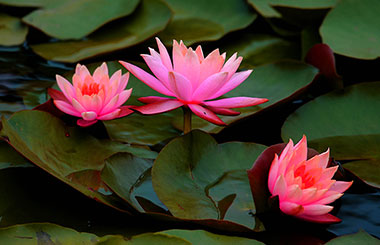Royal treatment
Korea's crowned heads are history, but the cuisine they fostered has become household fare, and a special treat in Shanghai, Xu Junqian discovers.
"Can you cook breakfast?" That's the question Korean mothers routinely ask before marrying off their sons to the future daughter-in-law-a subtle yardstick for judging the girl's wife hood.
"Yes, and I can cook royal court cuisine." That answer, though not heard very often nowadays, is sure to secure more than a nod from the mother-in-law.
Korean royal court cuisine, in theory, refers specifically to the style of cookery consumed during the Joseon Dynasty, a colossus that ruled the country for five centuries till the late 1800s.
But in daily life, the phrase simply translates to the art of a master chef, who can make everything from sauces to kimichi to the equivalent of Western stew or Chinese hotpot from scratch at home.
There is a solid reason behind the translation: Following the Japanese occupation of Korea, which put an end to the Joseon monarchy, large numbers of imperial chefs fled from the court into households. As a result, not only have those exquisite dishes-once exclusive to the blue bloods-been widely popularized, but the cooking techniques have also been passed on to generations of housewives in South Korea, where the tradition of men as breadwinners and women as homemakers flourished well into the 1990s. Then the Korean economy soured, encouraging more women out to seek a share of the family bread. That left even the making of breakfast an "extra" skill.
Then came the soap opera Jewel in the Palace, debuting in 2003. With a peak rating of 57.8 percent, the protagonist, an orphaned girl growing up in royal kitchens, found her way to millions of audience's heart, as well as the king's stomach, one dish at a time.
Thus were appetites whetted in and out of South Korea for the cuisine, which requires a minimum of 12 courses.
"The essence is the sauce," says chef Ma Junqing from Bibigo restaurant in Shanghai.






















